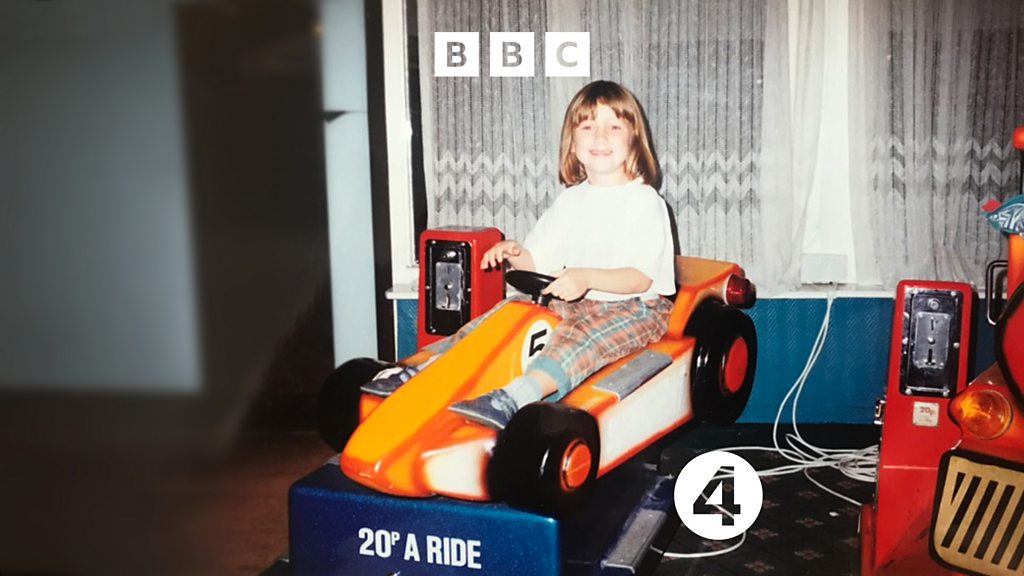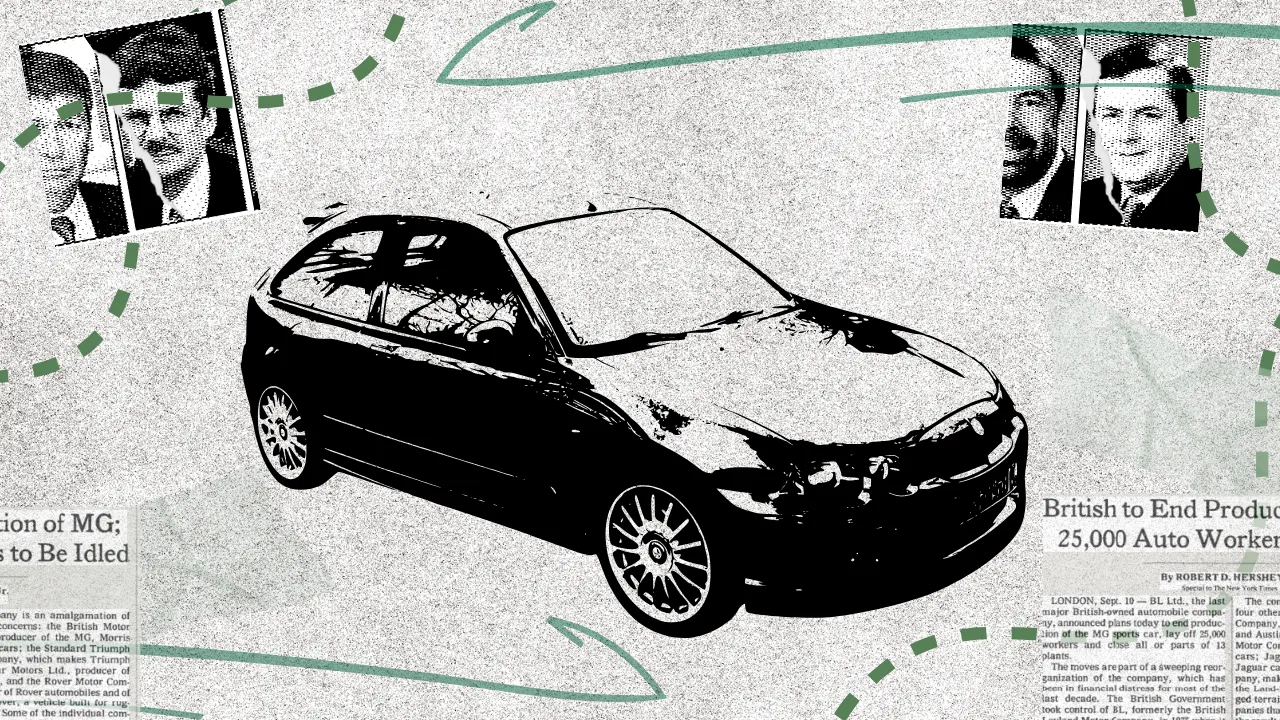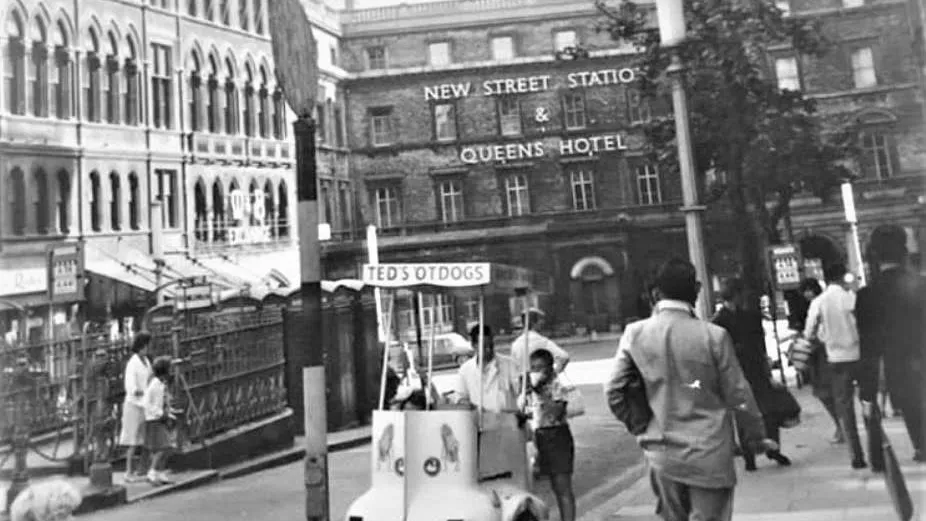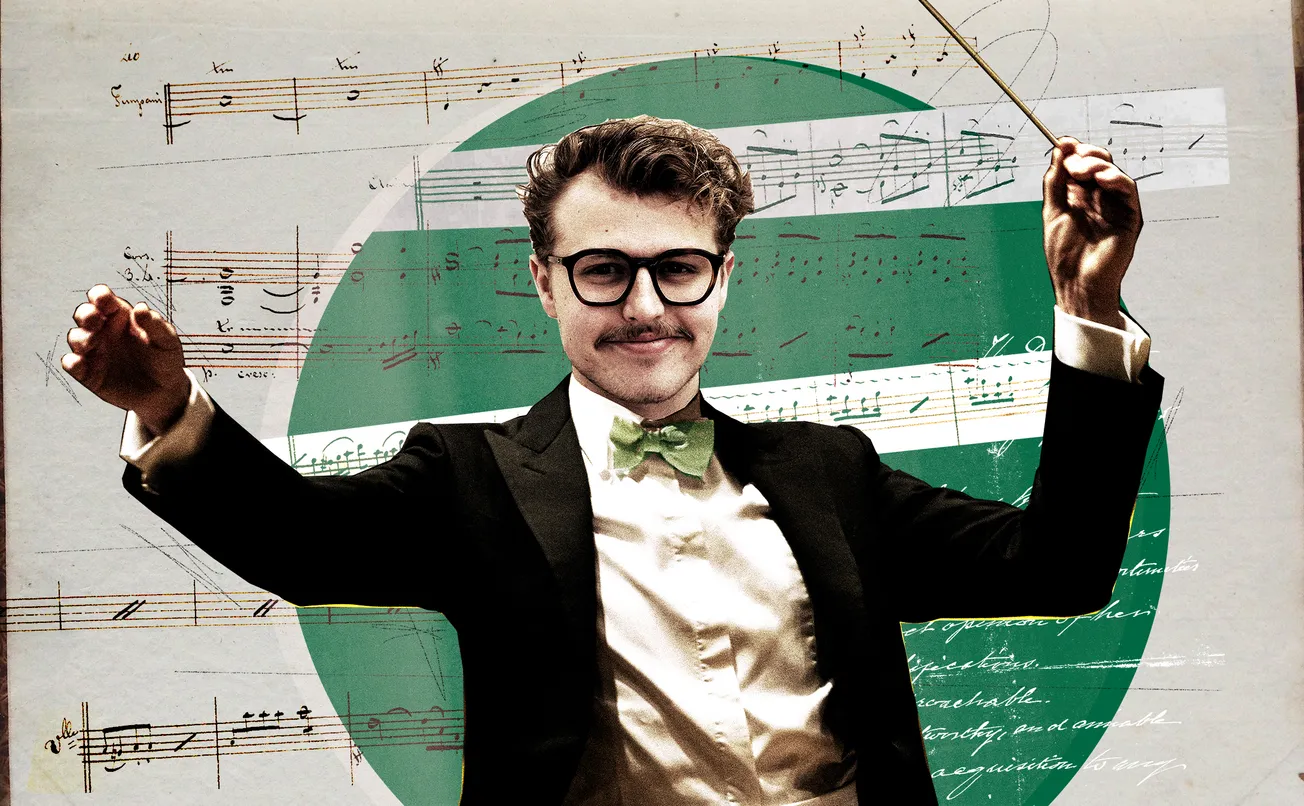When my grandfather died a few years ago, I found myself, like many people, burdened with the morbid task of having to buy a cheap black outfit from the nearest shop. This happened to be a branch of M&S which stood on the site of what had been the Longbridge factory, and the headquarters of the car manufacturer British Leyland — or MG Rover, as it was later called. My grandfather had worked as an upholsterer at the company for almost fifty years. It seemed a bitter irony to me, as I stepped out of the shop and looked at the KFC, the Premier Inn and the Costa Coffee which are also part of the same development, that there is almost no trace left of that vast operation and what had once been the largest factory in Europe.
The company that I always knew as Rover, existed in one form or another for over a hundred years. Beginning life as Austin, which was founded in 1905, it produced several million cars in its lifetime that were exported around the world. For several decades, these were also the most popular vehicles on British roads. As an infant I lived at my grandparents’ house and in the shadow of the Longbridge factory. Even after my parents were given social housing closer to Birmingham city centre, I would visit Longbridge almost daily, and spent most of my school holidays with my grandparents too.
That story is now the subject of a Radio 4 documentary that I recently wrote and co-produced with Alan Hall. I felt it was important, as we reached 20 years since the company closed, to ask ourselves why it is still only a footnote in the annals of British industrial history; paling in comparison, for example, with what most of us know about the closure of the coal mines in the 1980s, or indeed with the narratives around the decline of the great car manufacturing cities like Detroit.

One reason might be that the history is so complex — a fact that is attested to by just how many brand names are still used when referring to the company. Austin eventually merged with another car manufacturer, Morris, based in Oxford, in 1952. That company was called British Motor Corporation Ltd and its merger with Jaguar 14 years later in 1966, led to the formation of British Motor Holdings Ltd. Two years after that, and with the encouragement of Labour politician Tony Benn, British Motor Holdings Ltd. merged with another company, Leyland, whose original business had been steam engine parts, to form British Leyland in 1968.
Partly on account of those endless mergers, and the fact that different plants within British Leyland, including Longbridge, were often made to work in competition with each other, the company was nearly always in financial trouble. By 1975 it was bankrupt and nationalised by the Labour government under Harold Wilson. It employed over 170,000 people at that time, 27,000 of which worked at the Longbridge plant. When you consider the many thousands who were also employed in the supply industries, it would have been rare to live in Birmingham during the mid-1970’s and not have had some connection to the company.
Birmingham deserves great journalism. You can help make it happen.
You're halfway there, the rest of the story is behind this paywall. Join the Dispatch for full access to local news that matters, just £8/month.
SubscribeAlready have an account? Sign In








